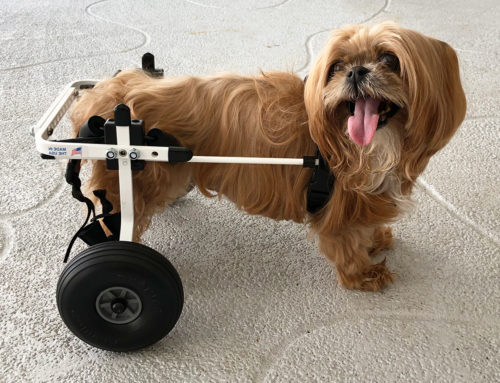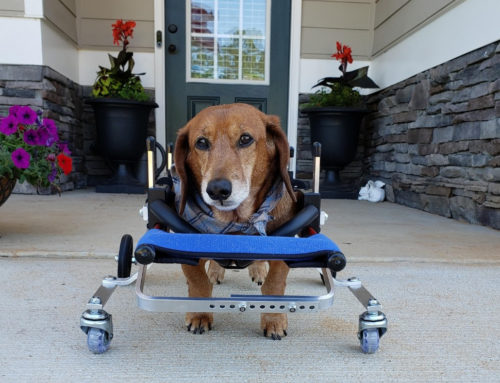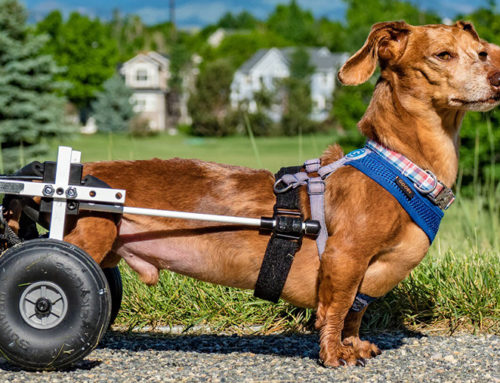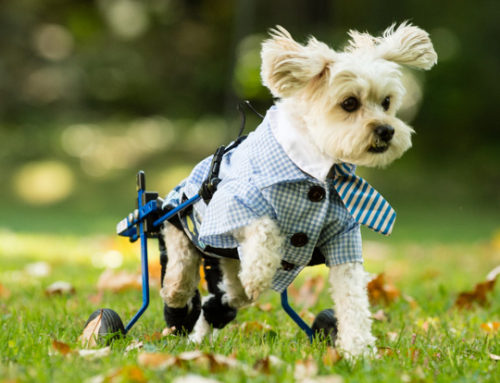Dogs love making friends and roughhousing at the dog park. If you’re putting your dog in a wheelchair, you’re probably worried whether they’ll still be able to go.
We have good news: dogs in wheelchairs can still enjoy trips to the park.
The Mobility Of Dogs In Wheelchairs
Doug Faber’s German Shepherd, Brick, had an aggressive spinal tumor that cost him the use of his back legs. But Brick was still able to go to his favorite dog park in Redmond, Washington with the help of his cart.

“Once [Brick] got the hang of the cart, the biggest obstacle was that the cart made him wider,” Faber says. “He might get caught on a fence pole or a tree, or something like that. But for the most part, he was fully functional, in the sense he was able to everything he wanted to do, but slower.”
Brick was even able to play fetch. At first, you’ll have to make accommodations for your dog’s disability. But after they get the hang of it, your furry friend will be moving around just fine.
Can Dogs In Wheelchairs Play With Other Dogs?
Dogs love going to dog parks because they can socialize with other dogs. That’s what sets dog park trips apart from other exercise.
Dogs in wheelchairs can play with other dogs, but they—and you—will have to make adjustments. For example, Brick was able to play with other dogs, but he couldn’t run as fast as he used to.
“He couldn’t run with the dogs, obviously, but he’d run after the dogs, and interact with dogs,” says Faber.
So dogs in wheelchairs can still play with other dogs. However, you’ll have to make sure that other dogs get along with your dog if it’s in a wheelchair. After all, fully healthy, able dogs will sometimes fight with each other.
Claire Carver looks after another German Shepherd, Reja. Reja is fourteen. She’s a retired search and rescue dog. Reja lost some motor function in her back legs, and got a wheelchair in August 2017.
“Some dogs do not like the cart—some dogs can be aggressive,” Carver says. Some dogs don’t react well when a fellow canine is wearing something. “Even when Reja had her search vest on, some dogs could become aggressive.”

For that reason, Carver is careful when she takes Reja out. She considers common-sense signs when deciding whether Reja should play with a strange dog.
“You have to be protective,” Carver says. “You have to read the dogs coming: are they happy and wagging their tail? Do they have their hackles up?”
Doug Faber, Brick’s guardian, says that he kept an eye on new dogs, but Brick was mostly OK.
“One or two dogs seemed as if they might have been wondering, ‘Hey, what is that thing that he’s running around with?’ But most of the dogs didn’t pay it any mind at all.”
Faber says that the wheelchair helped Brick out at the end of his life. Going to the dog park was one of Brick’s favorite activities. Faber is glad that Brick was still able to enjoy it, despite his disability.
“[Brick] was excited to be [at the dog park],” Faber says. “He was running up to other dogs and sniffing, saying howdy. He seemed to be having as good a time as he ever had.”
Photos of Brick provided by Doug Faber & Reja by Claire Carver.








Leave A Comment